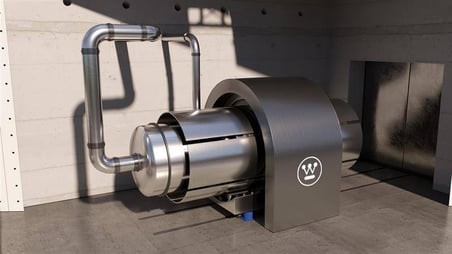As an undergraduate, I was one of about 45 women in a class of more than 900, so I was accustomed to being in the minority, but when I started grad school, I discovered that I was the only woman in the entire department of more than 100 students. And as I was finishing my doctoral thesis, Manson Benedict, the department head, consulted with his fellow department heads and told me that I was about to become the first woman to earn a doctorate in nuclear engineering in the United States.
Mike and I graduated together for a second time, then in 1972 headed to Washington, D.C. I worked at Analytic Services, a U.S. Air Force think tank, and initially was the only woman on a professional staff of about 50. As their nuclear expert, I got all the nuclear assignments, but I also worked on other projects that were seemingly unrelated. One project was simulators for air crew training. It was only later that I found that some of this experience was applicable to simulators for reactor operator training, which taught me that there may be common links where you least expect them.
I also got heavily involved in volunteer activities, both for my local alumni club and for the American Nuclear Society. In ANS, I met Octave du Temple, the first executive director of ANS, and he became one of my early mentors. Notably, all my subsequent jobs resulted in some way from contacts I made through these volunteer activities. For example, my next job was at the Congressional Research Service, which I learned about from a colleague in my alumni club. It was probably an ANS contact that then led to my third job, at the U.S. Nuclear Regulatory Commission, where I held management positions in different parts of the agency and ultimately ended up working for commissioner Kenneth C. Rogers (1987–1992).
I was fortunate to work in Japan twice during this period—once in an exchange assignment with their nuclear regulator and the second time at Tokyo Institute of Technology, which again was the result of a connection through ANS. Upon returning to the United States after the second assignment, I moved to the Department of Energy, where the Generation IV International Forum was just being launched. I simultaneously served as ANS president (2001–2002). The capstone of my career was an assignment at the OECD Nuclear Energy Agency in Paris. Coordinating two careers in different countries was a challenge—but an interesting one.
Since leaving full-time work, I have supported activities in many countries considering nuclear power and have participated in several educational programs, including the Washington Internships for Students of Engineering (WISE). I also wrote a book titled Nuclear Firsts: Milestones on the Road to Nuclear Power Development (2010; published by ANS), which was awarded the Engineer-Historian Award from the American Society of Mechanical Engineers in 2013.
My varied career provided me the opportunity to lead and contribute to efforts to support nuclear power in many areas, including risk assessment, advanced reactor development and regulation, international agreements and collaboration, knowledge management and preservation, and more. I am particularly proud to have played a major role in the development of the NRC’s Principles of Good Regulation, which has taken on an increased role in recent years. I’ve also been very gratified to see more and more women entering the field.
 I like to say that I ended up at Massachusetts Institute of Technology because of my father. He saw that I seemed intimidated by the prospect of going there, so he dared me, figuring I would take the bait. And I did.
I like to say that I ended up at Massachusetts Institute of Technology because of my father. He saw that I seemed intimidated by the prospect of going there, so he dared me, figuring I would take the bait. And I did.





